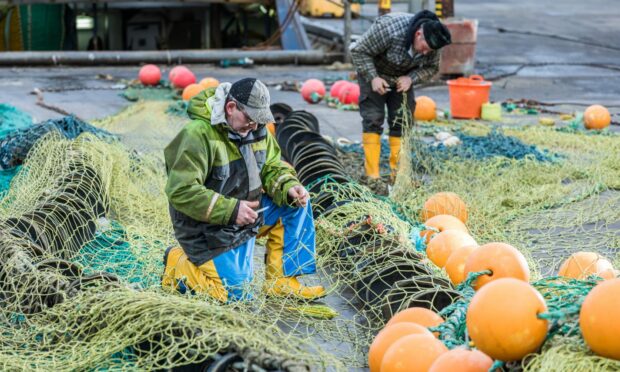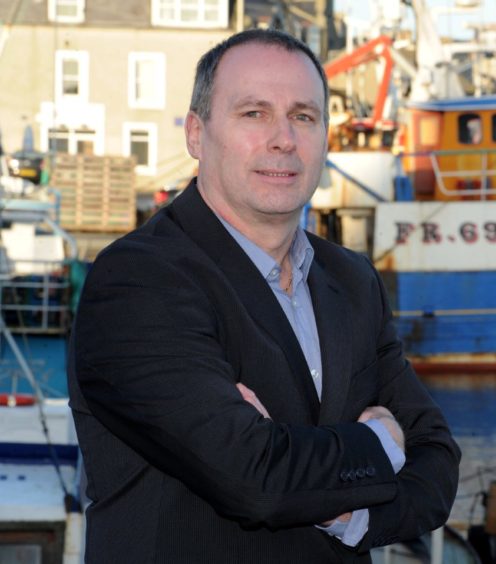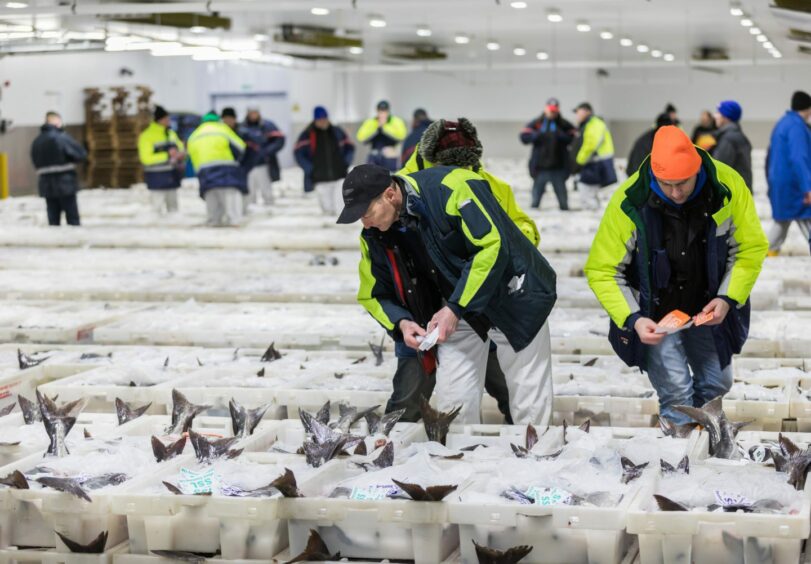Rapidly rising costs drove a 13% drop in profits for the UK fishing fleet in 2022, new figures show.
Fishing income grew by £50 million year-on-year to just over £1 billion as market prices increased for many key species.
But progress at the bottom line in 2021, when operating profits rose 5% to £256m, turned into dejection for the industry last year as the cost of fuel and other items soared.
2022 was especially tough. The common factor was the especially high price of fuel.”
Mike Park, Scottish White Fish Producers’ Association
The figures are from industry body Seafish, which also highlighted a continued decline in the number of total active vessels around the UK last year. There were fewer than 4,080 in 2022, compared with nearly 4,300 the year before.
Of the 2022 total, about 1,300 boats were deemed by Seafish to be in the “low activity” category for those reporting annual income of less than £10,000.
Scottish fleet’s smaller haddock woe
Scottish White Fish Producers’ Association chief executive Mike Park said: “2022 was especially tough for all sectors of demersal (white-fish) fisheries. The common factor was the especially high price of fuel, but also other associated costs such as transport and replacing fishing gear.
“While the prices of our products are shown to be higher, the white-fish and nephrops (prawn) sector did suffer greatly from a depressed price for smaller haddock. The price was so poor at times it cost the fishermen more to catch them than they could sell them for. For that reason they avoided them, leaving a large tonnage in the sea uncaught.”
Scotland’s fishing industry accounted for 1,719, or more than 40%, of the total number of vessels last year.
The total for north of the border was up, from 1,643 in 2021, in a stark contrast to the trend elsewhere in the UK.
Scotland’s fishing fleet includes many more larger vessels than other parts of the UK.
For this reason, the volume and value of catch landed north of the border are always a lion’s share of the overall totals. Last year, for example, the sector in Scotland reeled in tw0-thirds of the total UK catch by volume. This equated to fishing income of £615m for the industry north of the border, more than 61% of the total for the whole UK.
Scottish headcount fell in 2022
The total volume of Scotland’s catch fell to around 408,000 tons last year, from 419,400 tons in 2021.
According to Seafish, 3,325 people were in full-time equivalent roles in the Scottish industry last year, down from 3,506 in 2022 and nearly 50% of the UK total.
Rural Affairs Secretary Mairi Gougeon said: “The last few years have been incredibly challenging for the sector, with Brexit, the Covid-19 pandemic and cost-of-living crisis all having an impact. The particularly damaging impact of Brexit has hampered trade, created export barriers which have pushed up costs, and exacerbated labour and skills shortages in fishing and food production.”
Banff and Buchan Conservative MP David Duguid said: “These figures highlight the global and local factors which can make all the difference between a good and a bad year. Higher fuel prices – caused by the ongoing recovery from Covid and the war in Ukraine – have a direct impact on fishermen’s ability to go out and make a living.”
Every year Seafish researchers head to ports across the UK to talk to fishing vessel owners and gather data. The 2022 figures are preliminary estimates based on typical costs and earnings.
Fuel bills skyrocketed by 75%
Total UK spend on marine fuel in 2022 was an estimated £195m, a 75% increase from the year before. As fuel prices increased, total operating costs also went up – reaching the highest figure in the past four years.
Most fish prices rose significantly in 2022, with prawns 39% higher on average, Seafish said.
Seafish economics analyst Marta Moran-Quintana added: “Sanctions on Russian seafood increased average prices of white-fish, while increased demand drove up prices of shellfish, which helped many businesses stay afloat.”




Conversation